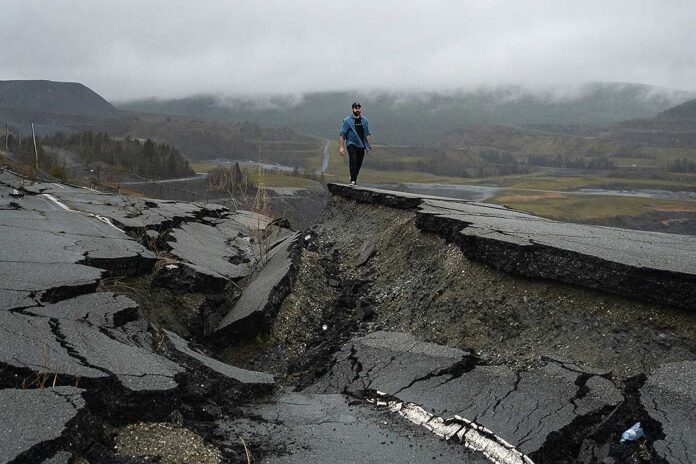Source: Massey University
Studies have shown that Earthquake Early Warning systems can potentially mitigate injuries and reduce damages, and can also help people to psychologically prepare.
Members of the research project team with the Toi Āria team during one of the workshops
in Nelson.
Many of us know that feeling when an earthquake hits – sometimes our first thoughts are wondering whether it is even an earthquake, which means potential life-saving seconds are lost before we take action.
An Earthquake Early Warning (EEW) system can get these crucial seconds back so that people can be better prepared when the shaking starts.
The Crisis Response and Integrated Simulation Science Laboratory (CRISiSLab), a research and learning laboratory based in the Joint Centre for Disaster Research (JCDR) at Massey University, has been investigating the feasibility of a low-cost sensor and community-based Earthquake Early Warning system since 2020.
Dr Raj Prasanna, the CRISiSLab Lead for the EEW project says, “We were motivated to start the project by the high levels of seismic risk in New Zealand and the rapid development of accessible technology that now makes it feasible to explore EEW options.
“EEW is a risk mitigation tool that can potentially reduce the impacts of earthquakes. Studies have shown that EEW systems can potentially mitigate injuries and reduce damages and can also help people to psychologically prepare for strong ground shaking.”
People and community
People and the community are central to the team’s EEW project and there is a strong social science component to the project. This is therefore a social science research team as well as a technical research team.
“Right from the outset, we wanted people and communities to be at the centre of the project. We made sure that we started the project by understanding people’s needs and perceptions before developing the system,” Dr Prasanna says.
“We conducted community workshops to understand people’s perceptions, concerns and expectations of an EEW. The social science team has also been investigating the societal use and acceptability of an EEW in Aotearoa New Zealand.”
The social science team maintains a community-of-practice of EEW researchers, practitioners, and technology manufacturers in Aotearoa New Zealand and globally.
“The community-of-practice acts as a platform for stakeholders to come together and generate essential discourse on developing EEW solutions appropriate for Aotearoa New Zealand. The platform also allows us to proactively learn from, and seek out possible collaboration with, experts around the globe. We regularly meet and host activities such as webinars with international EEW experts.”
The project team has also engaged with tāngata whenua since the start of the research programme in 2020.
“Our engagements with Māori have been supported by guidance from Associate Professor Christine Kenney. Māori partners have helped us understand and appreciate Māori worldviews. EEW systems in New Zealand must be developed in partnership with tāngata whenua in order to facilitate reciprocal sharing of knowledge between Māori and EEW scientists, equitable access to, and the cultural relevance of, new risk communication tools.”
How does it work?
An EEW system uses a network of sensors to gather and supply information about earthquakes in real-time.
“Two key concepts that enable EEW systems to work. One is that information travels faster than seismic waves, and the second is that an earthquake’s damaging secondary waves [S-waves] arrive much later than the less destructive primary waves [P-waves]. Using these two concepts, we integrate the capabilities of sensors, telecommunication networks and earthquake detection algorithms to quickly detect that an earthquake is happening. The system then sends information to locations further away to warn that ground shaking will be arriving.”
Key partnerships
The team works in partnership with EQC (which provided funding through the Biennial Contestable Fund 2020), QuakeCoRE, Resilience to Nature’s Challenges (RNC) and different agencies and groups to conduct community workshops. These groups, such as WREMO, AF8 and EastCoast Lab have strong connections with communities.
The team of researchers are from different disciplines and various areas across Massey including: Dr Raj Prasanna, Dr Julia Becker, Dr Marion Tan, Professor David Johnston, Alicia Cui, Syed Yasir Imtiaz, Chanthujan Chandrakumar and Rangana Sampath from the Joint Centre for Disaster Research; Associate Professor Anna Brown from Toi Āria: Design for Public Good; Dr Kristin Stock from Massey Geoinformatics Collaboratory; and Associate Professor Christine Kenney from Te Toi Whakaruruhau o Aotearoa.
External collaborators on the project include seismology expert Caroline Holden (SeismoCity), telecommunication and broadcasting specialist Dr Amal Punchihewa, earthquake engineer Dr Seokho Jeong (Changwon National University, South Korea), software and database expert Nandika Liayanage (ALSO, Germany), creative resilience specialist Emily Lambie, and PhD student Rasika Nandana (Victoria University of Wellington).
Project timings
Dr Prasanna says the project is currently at a feasibility study stage. “We have finished gathering data to understand the public’s expectations and perceptions and we will use what we learned from the communities to design an experimental network.
“We have currently deployed nearly 20 sensors in the Wellington region and have completed testing the performance of an experimental sensor network in a laboratory setting. Currently, we are in the process of testing the accuracy and reliability of our network and algorithms in a real-world setting with real-time earthquake data. The initial feasibility study is expected to finish in July 2022.
“However, based on the finding of the ongoing work we are expecting to secure long-term funding to expand our current work and potentially build a working prototype consisting of a large number of low-cost sensors installed in a number of regions across Aotearoa New Zealand.”



